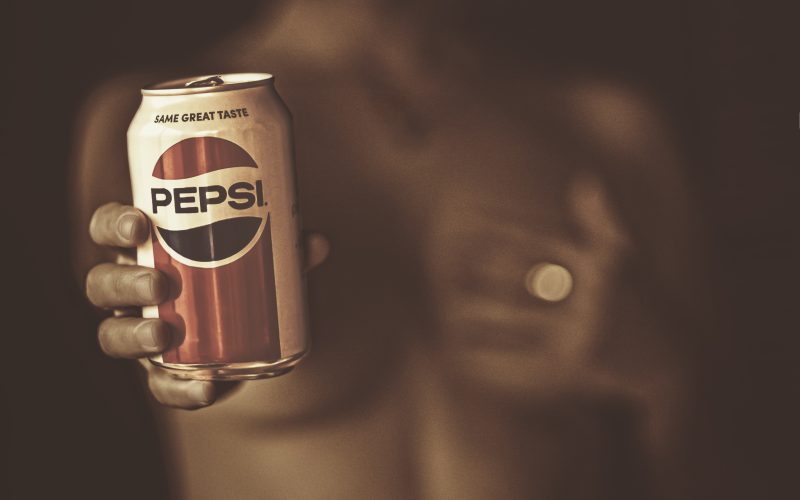Are you a fan of Pepsi or Nestle products? If so, you may have noticed a recent increase in their prices. Despite the price hikes, many consumers are still willing to pay for their favorite brands. But why is that? In this blog post, we’ll explore the different types of price increases implemented by Pepsi and Nestle and how they will affect consumers. We’ll also delve into why people are loyal to certain brands even when their prices go up. So grab a cold drink (maybe even a Pepsi!) and let’s dive in!
Pepsi and Nestle’s Price Hikes
Pepsi and Nestle are two of the biggest names in the food and beverage industry, with a wide range of products that people all over the world know and love. Recently, both companies have raised their prices on certain items, leaving some consumers wondering why they would pay more for something they could get cheaper elsewhere.
There are several reasons why Pepsi and Nestle may have implemented these price hikes. For one thing, raw materials like sugar or cocoa can become more expensive due to factors like weather conditions or geopolitical events. Additionally, changes in supply chain logistics or transportation costs can also drive up prices.
Despite these increases, many consumers still choose to purchase Pepsi and Nestle products because of brand loyalty. People develop emotional connections with their favorite brands over time through positive experiences such as taste preference or convenience.
Ultimately, whether you decide to continue buying your favorite Pepsi or Nestle products despite higher prices is up to you. But by understanding why these price hikes occur and considering other options available at different price points may help make an informed decision when shopping for groceries next time!
Why Consumers Are Still Willing to Pay for Their Favorite Brands
Consumers are often willing to pay more for their favorite brands, even when faced with price hikes. This may seem illogical at first glance, but there are some underlying reasons for this behavior.
Firstly, consumers develop a sense of loyalty towards certain brands over time. They associate these brands with quality and reliability, and they feel that switching to a new brand would be risky. Additionally, many people have emotional connections to certain products – perhaps they grew up drinking Pepsi or eating Nestle chocolates – which makes them more likely to continue buying these products even if the price goes up.
Another reason why consumers are willing to pay more is because they perceive the value of the product as being greater than its cost. For example, someone who loves Pepsi might view it as an essential part of their daily routine or a treat that brings them happiness. If they believe that the pleasure derived from consuming Pepsi outweighs the extra money spent on it, then they will continue to buy it regardless of any price increases.
Some consumers simply don’t have alternative options available or aren’t aware of them. In areas where certain brands dominate the market (such as in rural communities), people may not have access to other choices or may not know about cheaper alternatives.
While price hikes can be frustrating for consumers in general; when it comes down their favourite brand; retaining its quality is worth paying extra bucks!
The Different Types of Pepsi and Nestle’s Price Hikes
Pepsi and Nestle’s recent price hikes have been making headlines, causing concern among consumers. While both companies have cited reasons such as rising commodity costs and inflation for the increases, there are different types of price hikes that each company has implemented.
PepsiCo has increased the prices of their beverages across all channels, including retail stores and vending machines. The company stated that this is to offset higher ingredient and transportation costs. In addition, they have also introduced smaller packaging options at a lower cost to provide more affordable choices for consumers.
On the other hand, Nestle has raised prices on some of its products within certain regions or markets rather than across-the-board pricing. For example, Nespresso capsules in Germany saw an increase while Swiss chocolate maker Cailler saw a rise in prices only in Switzerland due to currency fluctuations.
It’s important to note that these price hikes vary depending on factors such as geography and distribution channels. Some markets may experience more significant increases compared to others due to various factors such as local taxes or tariffs imposed by governments.
It’s clear that PepsiCo and Nestle are taking measures to address challenges facing their businesses which ultimately impact consumers with varying degrees of severity depending on where they live or shop.
How the Price Hikes Will Affect Consumers
Consumers are always sensitive to price increases, and the recent hikes from Pepsi and Nestle have certainly raised eyebrows. For many consumers, these brands are household names that they trust and love – but will they still be willing to pay more for their favorite products?
One way the price hikes may affect consumers is by forcing them to look for cheaper alternatives. While some loyal customers may stick with their preferred brand regardless of cost, others may decide that it’s not worth paying more when there are similar options available at a lower price.
Another potential impact on consumers is a change in purchasing habits. If prices continue to rise, some shoppers may start buying these products less frequently or even stop altogether. This could lead to decreased sales for both companies in the long run.
However, it’s also possible that the price hikes won’t have much of an effect on consumer behavior at all. Some people may simply accept the new prices as a fact of life and continue buying their favorite brands without making any changes.
Ultimately, only time will tell how much of an impact these recent price increases will have on consumer behavior. But one thing is certain: companies like Pepsi and Nestle need to carefully consider how pricing decisions will affect their customers if they want to maintain customer loyalty over time.
Conclusion
After analyzing the reasons behind Pepsi and Nestle’s price hikes and how consumers are responding to them, it is clear that brand loyalty plays a significant role in consumer behavior. Despite the price increases, many consumers are still willing to pay for their favorite brands.
It is also important to note that companies like Pepsi and Nestle have carefully crafted their brand image and reputation over time through effective marketing strategies. This has helped them establish a loyal customer base who value the quality of their products above all else.
Furthermore, as inflation continues to impact various industries globally, it is likely that more companies will implement similar price hikes in order to maintain profitability. However, if these companies continue to deliver high-quality products with excellent branding strategies intact, they can expect continued support from their loyal customers.
While some may argue that Pepsi and Nestle’s recent price hikes could result in decreased sales or loss of market share, this does not seem to be the case so far. Consumers’ willingness to pay for trusted brands suggests that successful branding coupled with high-quality products can overcome even significant pricing changes.












